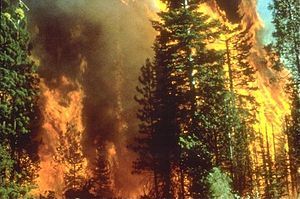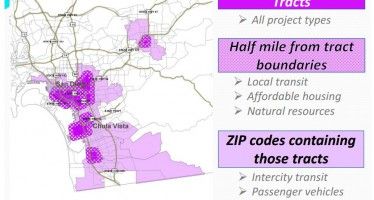Lawmakers learn what farmers already know about sustainable agriculture
May 10, 2013
By Katy Grimes
SACRAMENTO — During two hours of expert testimony Wednesday, California Assembly members learned future commercial and housing developments should not be built on prime agricultural land, which should continue to be used for farming. The committee acted as if this was a revelation.
The testimony took place before a Joint Committee hearing of the Assembly’s Select Committee on Sustainable and Organic Agriculture and the Select Committee on Agriculture and the Environment.
At the hearing, most of the expert testimony was about the need for sustainable farming. But the discussion was about climate-sensitive land-use planning involving AB 32, the California Global Warming Solutions Act of 2006; and SB 375, the Sustainable Communities Climate Protection Act of 2008.
The committees also glossed over the glaring issue of wildfire carbon emissions.
“As we head into the fire season, one fire can produce more carbon emissions than an entire year of auto emissions,” Assemblyman Brian Dahle, R-Bieber, told me after the hearing. And without forest management, one out-of-control wildfire also renders the soil sterile.
Dahle ought to know. He lives and works on his family farm in Lassen County, in California’s rural northern region. “Climate is intimately involved in our farming and overall land use,” Dahle said. “The forests are overgrown and we need thinning so the forests can handle fire.”
A four-term Lassen County supervisor, as well as a farmer and small-business owner, Dahle said wildfires are a disaster that we can see coming well before they happen. He said at the hearing that current forest management practices have “taken fire out of the system. Well-managed forests thwart wildfires, produce more water in our rivers and streams, and clean our air.”
“Managing forests responsibly can also create new jobs and economic activity in rural California,” Dahle said in a recent op-ed in the Anderson Valley Post. “Government’s approach to managing forests actually disrupts natural fire cycles, resulting in overloaded forests and wildfires of greater intensity and severity.
“Overgrown forests have an abundance of woody fuels, allowing flames to burn into the crowns of the tallest trees. When the forests were managed properly this did not occur.”
Dahle also told me, “I am working with a broad and bipartisan coalition to improve forest management policy with three specific goals: reduce fuel buildup, manage forests to reduce the threat of catastrophic wildfire. Forest thinning reduces wildfire size and severity, therefore reducing fire-generated greenhouse gas emissions, while producing renewable energy.”
Committee learns little about farming
But this Joint Committee merely discussed farming, most of which is already sustainable. Farmers have been practicing sustainable farming for thousands of years. It’s already a standard because it also makes the most economic sense.
Vicky Dawley, a Tehama County rancher and the District Manager for Tehama County Resource Conservation District, runs a large ranch equipped with an agri-tourism component; visitors can rent a cabin on her property, kayak, fish from her lake, hike, or just enjoy the quiet, without cell phone service.
“We put a conservation easement on the ranch in 2010,” Dawley testified to the committee. The ranch sells offsets as part of the state forestry protocol. Dawley has practiced grazing management for years, where she leaves the cattle on the range.
Grazing management is used to achieve optimum and sustained animal, plant, land, environmental or economic results, while ensuring a continuous supply of forages to grazing animals, and to reduce soil and nutrient losses in runoff.
But Dawley said she just got a letter from the State Department of Water Resources telling her to stop diverting water from her own lake.
Dawley said growers, ranchers and farmers could use some help and technical assistance to know what to do. She said the state used to work with farmers and ranchers, but is barely reaching out or available anymore with research findings and advances.
Williamson Act
The California Land Conservation Act of 1965, the Williamson Act, has been a state-funded program since 1972 to encourage county participation and long-term protection of more than 16 million acres of productive agricultural land and habitat. But the Legislature voted to stop funding the Williamson Act in 2009.
John Gamper with the California Farm Bureau Federation told lawmakers, “There is a general lack of political will to preserve farmland,” primarily at the local level. The CFBF recommends the Legislature re-establish incentives for stronger land preservation policies in order to achieve the goals of AB 32 and SB 375.
“Local planning is a fundamental part of the SB 375 process, but every region experiences strong pressures for sprawl in directions that are not consistent with sustainable community strategies,” Gamper said. “By permanently reinforcing urban limits, they can shift development in the preferred direction while providing protection to important farm and resource lands.”
Gamper said state funding easements, the Williamson Act, and higher property tax backfill will help provide “important benefits connected to land conservation strategies, including the important goals of preserving soil productivity and maintaining food security.”
Save the earth, ignore wildfires
While the Legislature works overtime to create policies to save the earth from climate change, one wildfire completely erases all of the perceived carbon reductions. And climate change supporters largely ignore other forms of clean energy.
“The Legislature needs to consider the merits of biomass energy as a sustainable resource on a larger scale,” Dahle said in his op-ed. “We can use bark, sawdust, wood chips and ladder fuels to generate energy that is clean and sustainable. Mark Nechodom estimates that biomass power can generate $1.58 billion annually in electricity while reducing greenhouse gas emissions in those areas by 65 percent.”
Nechodom is a research scientist with the Sierra Nevada Research Center.
“At a time when businesses in California are paying millions of dollars to retrofit their vehicle fleets to meet new low carbon standards, it is wise to remind the State Air Resources Board that one severe forest fire in my district wipes out all of the ‘carbon savings’ that they plan to get through increased regulation and the implementation of AB 32, the ‘Global Warming Solutions Act.’
“The Air Resources Board should consider a series of regulations that hold the Forest Service to the same standards for pollution control as they do everyone else. If they did, we would see a massive change in how the forests are managed.
“Since they won’t, we can plan on a summer of fire and smoke.”
Related Articles
Green Bank Czar could oversee new state bureaucracy
In American political parlance, a “czar” is a government official put in charge of a project. For example, the
Counties vie for ‘disadvantaged’ cap-and-trade bucks
In the fictional town of Lake Woebegon, all of the children are above average. But in the real world
Toyota ‘sudden acceleration’: CA-born scam costs firm billions
There are multiple reports that Toyota is about to pay nearly a $1 billion fine to the U.S. government for






